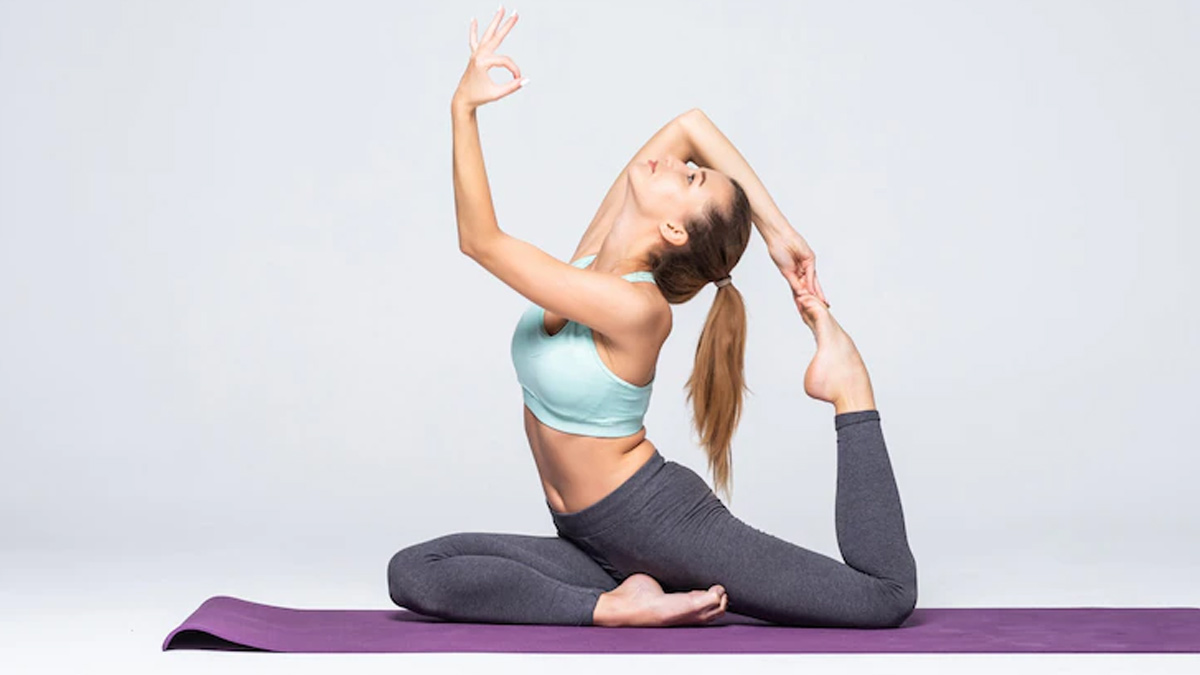
Toe cramps can be a painful and disruptive experience that can interrupt daily activities, especially for those who regularly engage in physical activity. Fortunately, practising yoga asanas can provide relief from toe cramps, as well as prevent them from occurring in the first place.
Table of Content:-
Yoga for Toe Cramps
Toe cramps are caused by a number of factors, including overuse, dehydration, poor circulation, or a mineral deficiency, such as low levels of potassium, calcium, or magnesium. Fortunately, yoga poses can help address these underlying issues, and help relieve the pain and discomfort of toe cramps.
Here are some yoga asanas that can help alleviate toe cramps:
1. Uttanasana (Standing Forward Bend)
Uttanasana is a gentle forward bend that stretches the entire back of the body, including the legs and feet. This asana helps to improve circulation to the feet, and can relieve tension in the calves and hamstrings, which can contribute to toe cramps. Stand with your feet hip-distance apart, and fold forward from the hips, keeping the knees slightly bent. Place your hands on the ground or hold onto your elbows. Relax your neck and shoulders, and stay in the pose for several breaths.
Also read: 10 Things To Remember Before Undergoing IVF Treatment, Expert Weighs In

2. Adho Mukha Svanasana (Downward-Facing Dog)
Adho Mukha Svanasana is a popular yoga pose that stretches the entire body, including the feet and toes. This asana helps to improve circulation to the feet, and can relieve tension in the calves and hamstrings. Start on your hands and knees, with your hands shoulder-width apart and your knees hip-width apart. Press your hands into the ground, and lift your hips up and back, coming into an inverted V-shape. Keep your feet hip-distance apart, and press your heels towards the ground. Stay in the pose for several breaths.
3. Virasana (Hero Pose)
Virasana is a seated pose that stretches the thighs, knees, and feet. This asana helps to improve circulation to the feet, and can relieve tension in the calves and hamstrings. Kneel on the ground with your legs together and your feet flat on the ground. Spread your feet slightly wider than hip-distance apart, and sit back on your heels. If your hips or knees are tight, place a blanket or cushion between your buttocks and your heels. Stay in the pose for several breaths.
Also read: 10 Things To Remember Before Undergoing IVF Treatment, Expert Weighs In

4. Viparita Karani (Legs-Up-The-Wall Pose)
Viparita Karani is a restorative pose that can help to improve circulation to the feet, and relieve tension in the calves and hamstrings. Lie on your back with your buttocks close to a wall, and extend your legs up the wall. Keep your legs straight, and relax your feet and toes. Place a cushion or folded blanket under your hips for support, and stay in the pose for several minutes.
5. Balasana (Child’s Pose)
Balasana is a gentle forward bend that stretches the entire back of the body, including the legs and feet. This asana helps to improve circulation to the feet, and can relieve tension in the calves and hamstrings. Start on your hands and knees, with your hands shoulder-width apart and your knees hip-width apart. Lower your hips towards your heels, and stretch your arms forward. Rest your forehead on the ground, and relax your neck and shoulders. Stay in the pose for several breaths.
Practising yoga asanas can be an effective way to relieve toe cramps and prevent them from occurring. By improving circulation to the feet, and releasing tension in the calves and hamstrings, yoga poses can help to address the underlying causes of toe cramps, and provide lasting relief. As with any new exercise program, it is important to consult expert guidance to avoid injuries.
Also watch this video
How we keep this article up to date:
We work with experts and keep a close eye on the latest in health and wellness. Whenever there is a new research or helpful information, we update our articles with accurate and useful advice.
Current Version